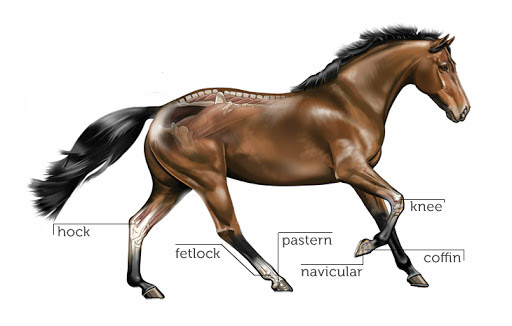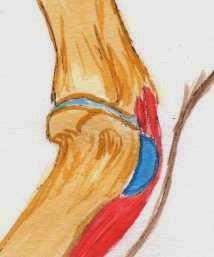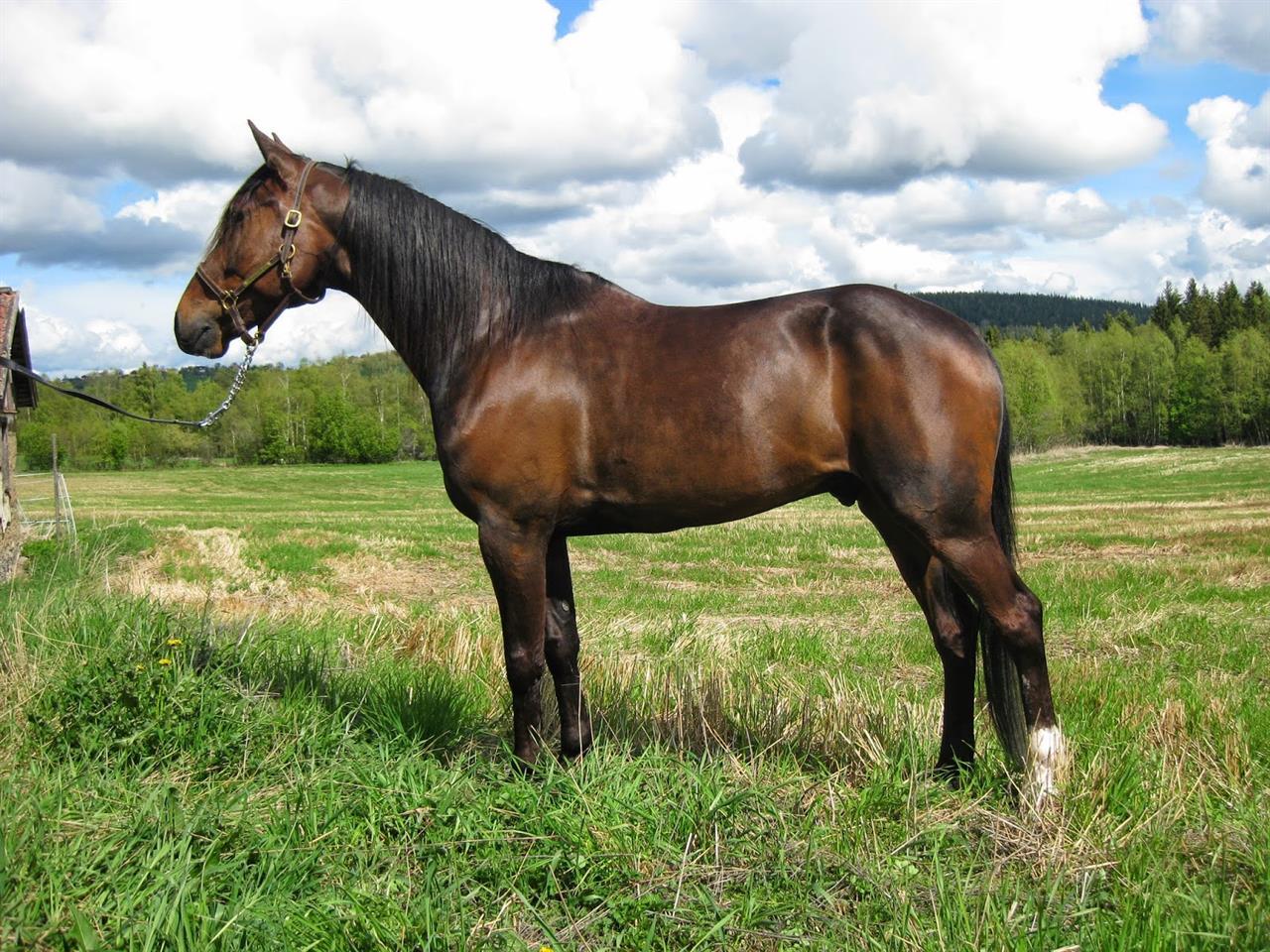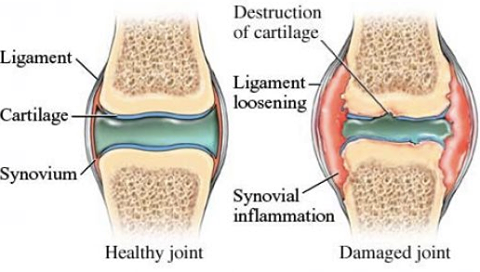
If muscles are tense due to poor blood circulation or inflammatory processes, the horse will more easily be affected by strains on the skeleton. The back legs are propulsive, and at the point where the bone sticks out from the body a knee joint and knee cap embedded in strong muscles can be found. From the hock joint and downwards, like in the front leg, tendons and ligaments are found that help good circulation.
In connection to joints, and even other places, there are bursa. They decrease the friction between muscles and bone. A bursa can stand in connection to the joint socket through a pathway, or be independent. The bursa is composed of a connective tissue capsule that has a fluid that is similar to the synovial fluid. The bursa size vary. The smallest are microscopic whilst the largest have a diameter of several centimeters. Inflammation in one of the bursa can give bursa a symptom, like a joint inflammation. When it gets inflamed it increases in volume and exerts a lot of pain.
The horse’s muscles are well developed and adapted for quick movement. Muscles are grouped together at the top of the leg and transition into tendons and ligaments from the carpal down to the hock joint. The skeletal muscles are composed of muscle fibers and connective tissue. Muscles work in pairs. Every muscle has an antagonistic counterpart. When a muscle contracts, the antagonist relaxes. These contractions and relaxation bend the joint and produce motion.
KEEP THE HORSES MUSCULOSKELETAL SYSTEM HEALTHY
It is usual for horses that train and compete to get frequent injuries due to acidification with effect on muscles, joints, ligaments, and tendons due to inflammatory processes occurring. An acidic body can also create deposits of calcium from the skeleton which can cause strains on the vertebrae. Many competitive horses break bones due to decalcification. Poor blood flow can also happen, which minimizes build-up of synovial fluid and the joints get dry.
GLUCOSAFOR, MSM, ROSEHIPS AND PÄLSoHOV supports a healthy muscular and skeleton system in the horse.


